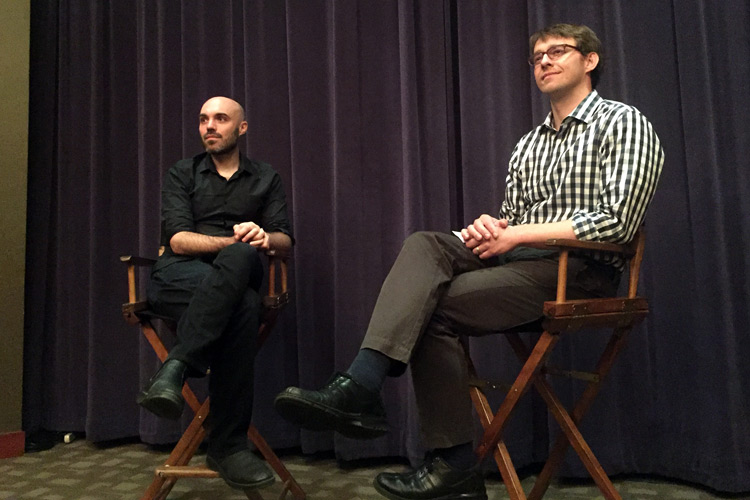The following questions and answers are excerpted from a conversation that followed the NBR screening of A Ghost Story.
What was it like working on Pete’s Dragon while writing A Ghost Story?
David Lowery: The script was only thirty pages and I sent it to my producer friends, saying, “let’s make this.” We were finishing the visual effects and score on Pete’s Dragon, so a lot of time was just spent sitting alone in a room waiting for things to be ready. The one thing for pre-production we did for this film was find the house, which was totally gutted and had to be fixed up. I’d fly to Texas on the weekends to work on that, do some test shooting, check out costumes and what not. It wasn’t like there were two giant things operating in my mind. It was more like this was developing in the background and the shift was very organic as Pete’s Dragon slowed down.
“There are a bunch of big themes, but they’re big in a way that everyone is familiar with.”
How quickly did you figure out how you wanted the ghost to exist in space-time? Were there any other notions you considered?
Lowery: It was very point A to point B. The only thing that emerged in the editorial process was shaking up the timeline a bit in terms of having a flashback in the middle of the film. I felt that the movie was already using time in such a fluid way, especially in the last act, so I didn’t think a flashback would work. All that stuff you see with Casey and Rooney and the ghosts was stuff for the beginning of the movie, but as we shot I threw the ghost in the background for different shots. This was also a good way to subtly address the question I knew we’d get about whether or not Casey is under the sheet the whole time! We definitely were open to being intuitive and exploring on set, but at the end of the day this resembles the script truly and thoroughly.
As far as the visual design of the film, at what point did you decide to shoot 4:3 ratio with the vignette? How did you go about executing that?
Lowery: The first line of the script is that this film will be in 1:33 because I had always wanted to use that aspect ratio and felt it worked for this one. I thought we could use that aspect ratio to heighten the claustrophobia and then to go beyond it at a certain point. The curved edges were added in editing because most people would have pillar boxes when viewing it, thus giving a proscenium. Something about the vignettes enhances that while adding a nostalgic quality.
What did you find was the key to filming long takes effectively?
Lowery: I use myself as a gauge for a lot of them. On set, we’d hold on the shot for a certain period of time and then I trimmed it based on when I felt I was no longer getting anything out of it. In the editing room, you get the rhythm of the movie and intuitively feel when scenes need to be truncated. The scene in the hospital where Casey sits up for the first time was originally going to be a wide shot and we felt that there needed to be a long time between her leaving and him getting up, so we just held it for one minute. To keep people engaged, we made sure the sound design kept people interested as well.
There are many different mechanisms being used to show the themes of the films, but the most arresting one is the Texas hipster at the party. What inspired you to include that particular scene?
Lowery: There are a bunch of big themes, but they’re big in a way that everyone is familiar with. There’s a comfort in that universality, so this is my way of dealing with some of these issues keeping me awake of night. There’s no answer in the film. That monologue is me rationalizing for myself and figuring out how to make sense of things within the parameter of the universe. I feel like he gets two-thirds into a thesis statement and stops since nobody is listening. I wanted it at that point in the movie since things are about to change and get unhinged to a certain degree. I felt we needed a little bit of a roadmap as to where we’re going and a breather after so much silence. It’s helpful to have something to hold onto at that point.

